The Ultimate Guide to Ice Cleats for Hiking and Outdoor Camping
Exploring the great outdoors during winter can be breathtaking, but icy trails and slippery surfaces pose significant risks. Whether you’re an avid hiker, camper, or just someone who enjoys winter adventures, having the right gear is crucial for safety. One essential piece of equipment for winter exploration is ice cleats. These traction devices can make all the difference in preventing slips and falls on frozen terrain.
This guide covers everything you need to know about ice cleats for hiking and outdoor camping, from their benefits and types to selection tips and maintenance.
What Are Ice Cleats?
Ice cleats are specialized traction devices designed to be attached to footwear to provide additional grip on icy or snowy surfaces. They are commonly used by hikers, campers, and outdoor workers who need to navigate treacherous winter terrain safely.
How Do Ice Cleats Work?
Ice cleats feature metal spikes, chains, or rubberized grips that dig into ice or packed snow, improving stability and reducing the risk of slipping. Depending on the type, they can be made from steel, tungsten carbide, or reinforced rubber.
Benefits of Using Ice Cleats for Hiking and Camping
Using ice cleats during winter hikes and camping trips offers numerous advantages, including:
- Enhanced Traction: Cleats provide a firm grip on icy and snowy surfaces, making movement safer and more stable.
- Injury Prevention: Slips and falls on ice can lead to serious injuries. Cleats help minimize this risk.
- Increased Confidence: Knowing you have reliable footing allows you to enjoy winter landscapes without constant fear of slipping.
- Versatility: Many models work well in different winter conditions, from packed snow trails to frozen lakes.
Types of Ice Cleats
Not all ice cleats are created equal. The type you choose depends on the terrain and activity. Here are the most common types:
1. Spiked Ice Cleats
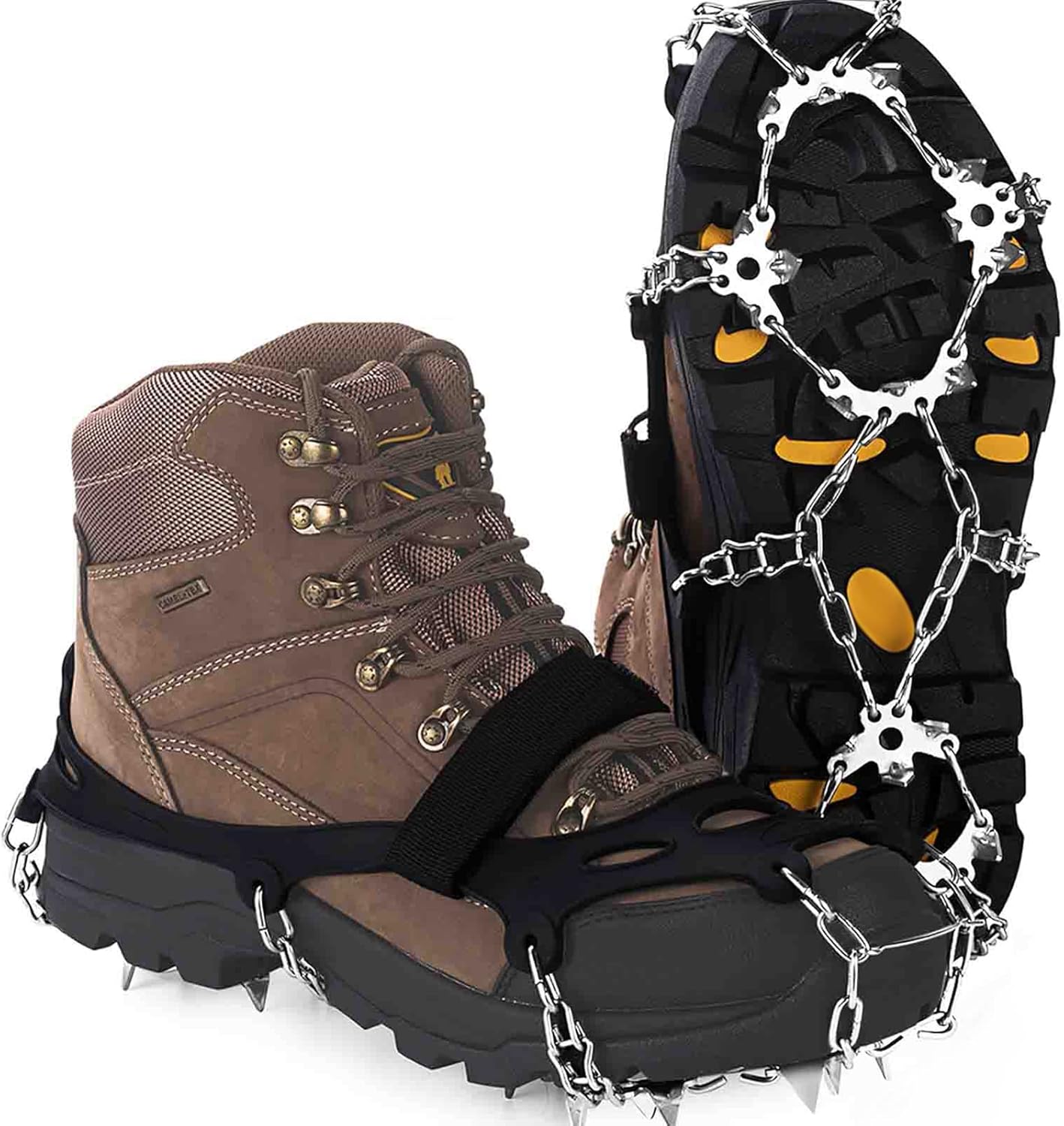
Metal spikes provide excellent traction by digging into ice and snow, making them the best choice for extreme winter conditions. In particular, they perform well on icy trails and steep terrain. Therefore, they are ideal for serious hikers and mountaineers who need reliable grip in harsh environments.
2. Chain-Style Ice Cleats
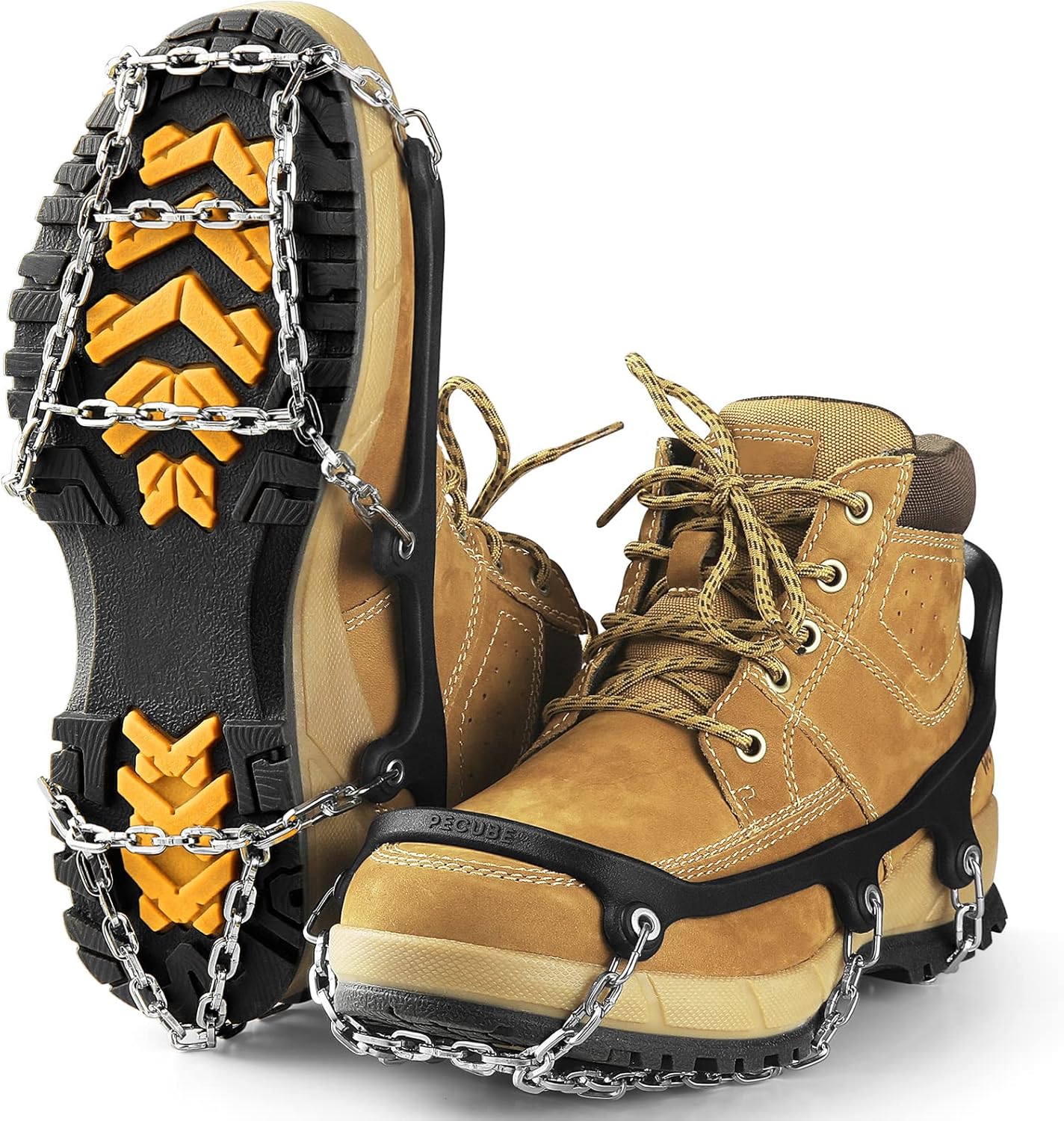
Made of interwoven metal chains, these traction devices provide solid grip on icy surfaces. As a result, they are suitable for walking on moderate ice without slipping. Additionally, they work well for general winter hiking and urban use, offering both stability and convenience.
3. Rubber Traction Cleats
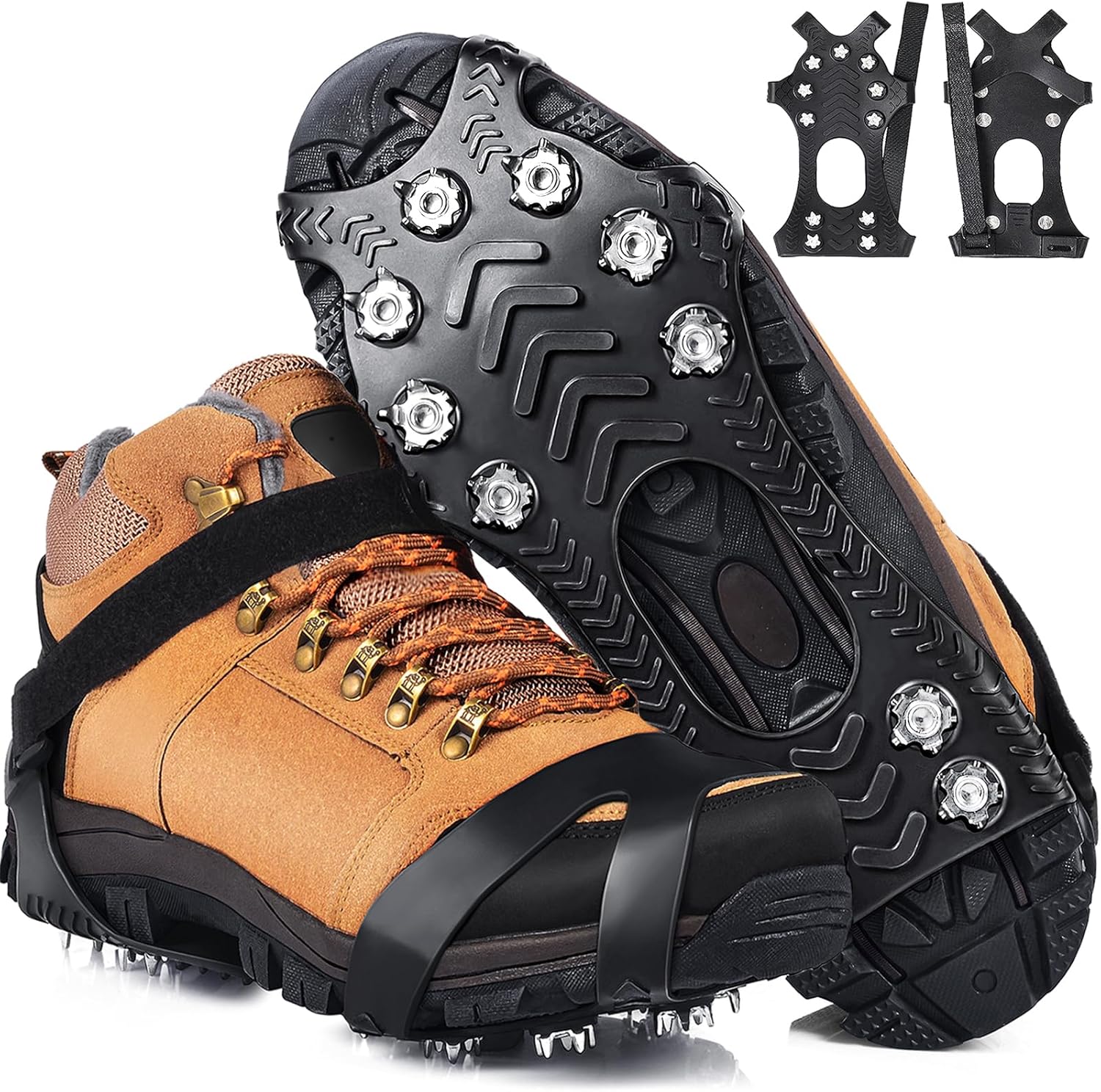
These traction devices feature rubber grips with small metal studs, which provide basic stability on slippery surfaces. Therefore, they are best for light-duty winter walking or casual hikes. Additionally, they are easy to wear and remove; however, they are not ideal for extreme conditions.
4. Microspikes
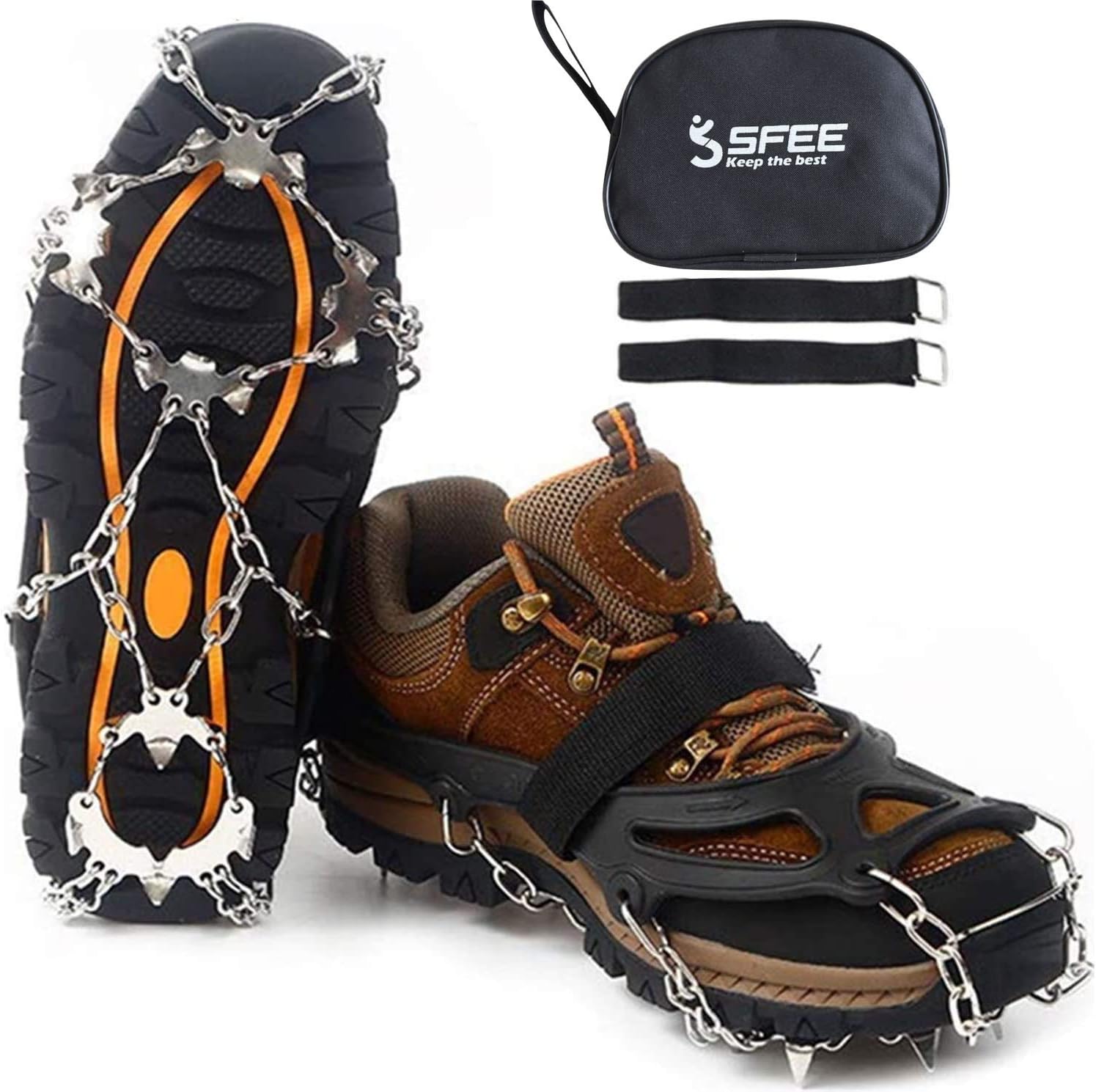
These cleats are a hybrid between spiked and chain-style designs, combining the benefits of both. Specifically, they feature small yet durable metal spikes attached to a flexible harness, ensuring a secure fit. As a result, they are excellent for hiking on packed snow and icy trails, providing reliable traction and stability.
How to Choose the Best Ice Cleats for Hiking and Camping
When selecting the right ice cleats, consider the following factors:
1. Terrain Type
For steep and icy mountain trails, it is best to opt for spiked cleats or microspikes, as they provide superior traction. On the other hand, for flat, icy roads and packed snow, chain-style cleats work well because they offer a balance of grip and flexibility. Meanwhile, for everyday use or short hikes, rubber traction cleats are sufficient since they are lightweight and easy to wear.
2. Material and Durability
Stainless steel spikes or chains are ideal because they provide both durability and rust resistance. Similarly, tungsten carbide spikes offer superior strength and longevity, making them a great choice for rugged conditions. Additionally, rubber frames should be flexible yet strong so they can withstand cold temperatures without cracking or losing their shape.
3. Fit and Compatibility
To ensure maximum stability, make sure the cleats fit snugly over your hiking boots. Additionally, adjustable straps or stretchable designs provide a secure fit, preventing them from slipping during use. As a result, you can hike confidently on icy and snowy terrain without worrying about discomfort or loose traction.
4. Ease of Use
Quick on-and-off designs are ideal because they provide added convenience, especially in cold weather. Furthermore, some cleats come with Velcro straps, which offer better security by keeping them firmly in place. As a result, you can enjoy a hassle-free experience while ensuring reliable traction on icy surfaces.
Tips for Using Ice Cleats Safely
To maximize safety and efficiency, follow these usage tips:
- Always test your cleats before heading into the wild.
- Adjust them properly to ensure they fit snugly over your boots.
- Walk with short, deliberate steps to maintain balance.
- Remove cleats before walking indoors to prevent damage to floors.
- Avoid using cleats on bare rock or pavement, as they can wear out quickly.
Maintenance and Care for Ice Cleats
Proper care extends the life of your ice cleats and ensures optimal performance. Here’s how to maintain them:
- Clean them after each use to remove dirt, snow, and ice.
- Dry them thoroughly before storage to prevent rust.
- Check for damage regularly, especially worn-out spikes or loose chains.
- Store in a dry place away from direct sunlight to prevent rubber degradation.
Expert Tips for Extreme Conditions
When hiking or camping in extreme winter conditions, follow these expert tips to stay safe and maximize your cleats’ effectiveness:
- Layer your traction devices: If the terrain is unpredictable, consider carrying both microspikes and full crampons for adaptability.
- Use gaiters: Keep snow and ice out of your boots by wearing gaiters, which also help maintain warmth.
- Apply anti-icing spray: Prevent snow buildup on cleats by applying a specialized anti-icing spray before heading out.
- Keep an emergency repair kit: Bring extra straps, links, or zip ties to fix cleats in case they break during your adventure.
- Practice before tackling tough trails: Get used to walking with your cleats on flat terrain before attempting steep, icy inclines.
- Stay aware of temperature changes: Ice conditions can shift rapidly; always be ready to adjust your traction accordingly.
Best Ice Cleats for Hiking and Camping
Here are some top-rated ice cleats for outdoor enthusiasts:
- Kahtoola MICROspikes – Excellent grip and durability for serious hikers.
- Yaktrax Chains – A great choice for urban walkers and light hikers.
- Hillsound Trail Crampons – Ideal for more challenging terrains.
- STABILicers Walk Traction Cleats – A budget-friendly option for casual use.
Conclusion
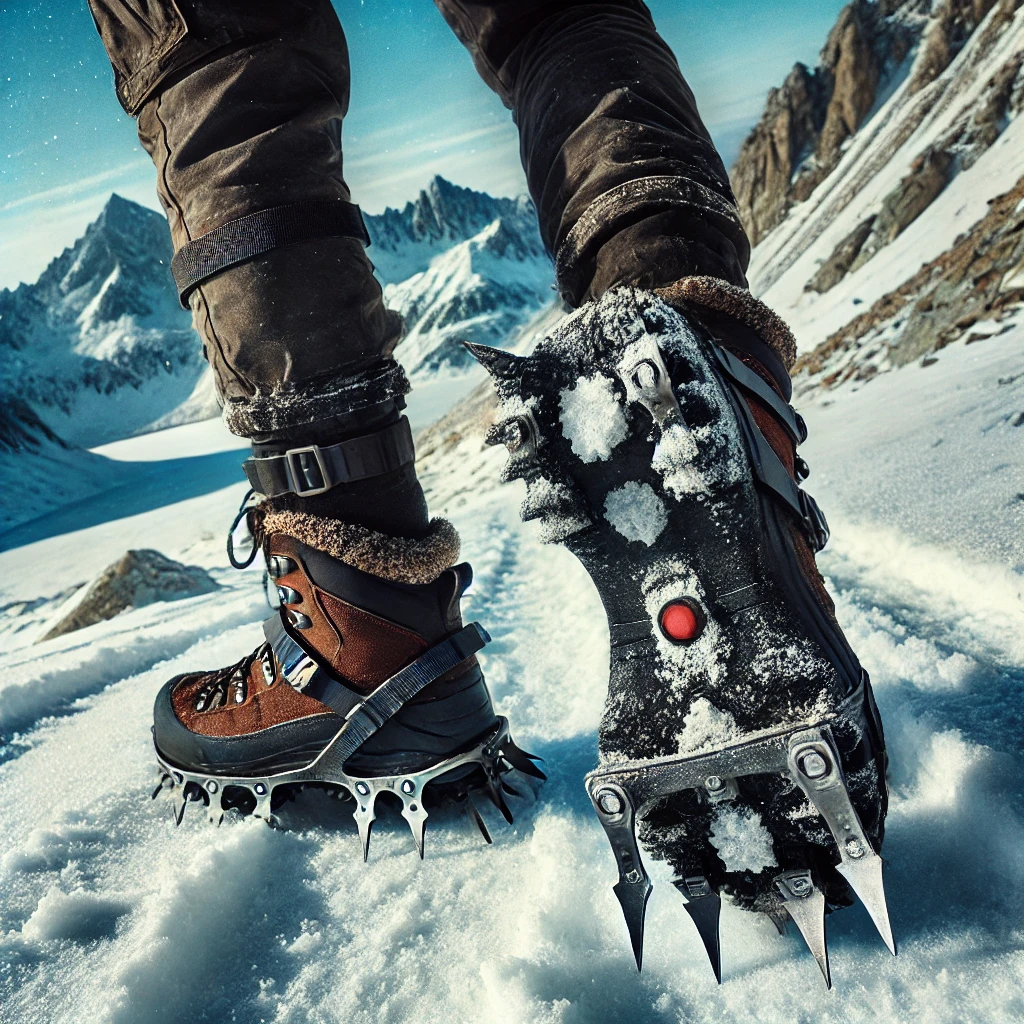
Ice cleats are a must-have for winter hiking and outdoor camping, offering essential traction and stability on icy terrain. Choosing the right type of cleats depends on the activity and terrain, so it’s important to assess your needs before making a purchase. By following proper safety measures and maintenance practices, you can enjoy winter adventures with confidence and peace of mind.
Whether you’re an experienced hiker or a casual camper, investing in high-quality ice cleats can make all the difference in your outdoor experience. Stay safe and explore the winter wilderness with confidence!
